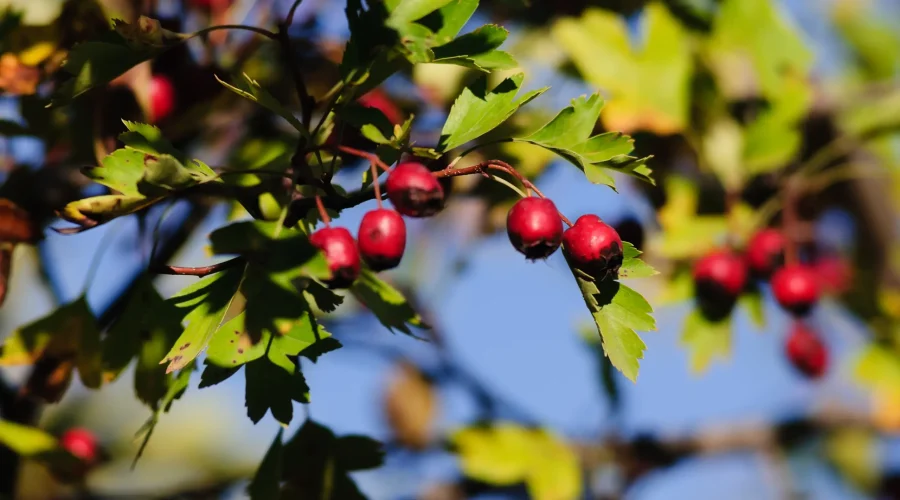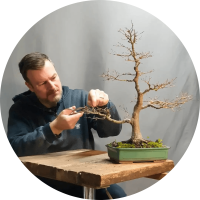How To Care for an Crataegus Monogyna

The Crataegus monogyna, commonly known as the Common Hawthorn, is a classic European deciduous species loved for its rugged bark, delicate flowers, and ability to evoke the feeling of an ancient countryside tree in miniature form. Its balance between strength and elegance makes it a rewarding choice for intermediate to advanced bonsai enthusiasts.
Crataegus Monogyna at a glance
Native to Europe, North Africa, and Western Asia, this tree grows naturally in hedgerows and open fields, adapting to a variety of conditions. In bonsai form, it is prized for its aged bark, small lobed leaves, and clusters of white or pinkish flowers in spring, followed by red berries (haws) in autumn.
Its seasonal changes, from blossoms to fruit to bare winter branches, make it one of the most dynamic species to grow.
How often should I water my Crataegus Monogyna bonsai?
The Crataegus monogyna bonsai — or Common Hawthorn — enjoys consistently moist soil but dislikes being waterlogged. During spring and summer, check the soil daily and water thoroughly as soon as the top layer begins to dry. In particularly hot or windy weather, you may need to water once or even twice per day, since this species has fine roots that dry quickly in shallow pots.
As autumn approaches and growth slows, gradually reduce the watering frequency, allowing the soil to stay slightly damp but never completely dry. In winter, when the tree is dormant, water sparingly, just enough to prevent the roots from drying out.
Always ensure good drainage, as standing water can lead to root rot, while an irregular watering rhythm can weaken the tree or reduce flowering in spring. A consistent, balanced routine keeps your Hawthorn healthy, resilient, and beautifully compact throughout the seasons.
How much light does my Crataegus Monogyna need?
Your Crataegus monogyna bonsai thrives in full sun, ideally at least six hours of direct light per day. Ample sunlight is essential for compact leaf growth, strong flowering, and the development of its signature rugged bark.
During spring and autumn, full exposure helps the tree produce vibrant flowers and later, bright red berries. In summer, when temperatures rise above 30 °C (86 °F), it’s best to give your bonsai light afternoon shade to prevent leaf scorch and dehydration, especially if it’s in a shallow pot.
In winter, the Common Hawthorn can remain outdoors, even in cold conditions, since it’s fully frost-hardy. However, protect it from freezing winds and heavy snow, which can damage fine branches.
Placing your Hawthorn in a bright, open spot. Such as a balcony, terrace, or garden bench. Will bring out its natural rhythm through the seasons, from spring blossoms to autumn fruit.

What's the best temperature for my Crataegus Monogyna?
Its ideal temperature range lies between 10 °C and 25 °C (50 °F – 77 °F) during active growth, though it can tolerate both heat and frost when properly cared for.
In spring and summer, moderate warmth combined with fresh air promotes vigorous branching, lush foliage, and abundant flowering. The Hawthorn is remarkably adaptable and can handle short periods of heat, provided the soil remains consistently moist and the roots are not allowed to dry out.
As autumn arrives, cooler nights and crisp air trigger the formation of its characteristic red berries and prepare the tree for dormancy. In winter, the Common Hawthorn can withstand temperatures as low as –10 °C (14 °F) without harm. For regions where frost is more intense, it’s best to place the bonsai in a cold frame, unheated greenhouse, or sheltered area to protect the roots from freezing solid.
Avoid keeping it indoors during cold months. The tree needs this natural resting period to reset its energy and ensure healthy budding in spring. Allowing your Crataegus monogyna to experience the full cycle of the seasons is key to its long-term strength, beauty, and stability.
Fertilising your Metasequoia Crataegus Monogyna
Feed your Hawthorn bonsai from early spring to late summer with a balanced fertiliser, such as NPK 10-10-10 or organic pellets. Avoid overfeeding during active blooming, as excessive nitrogen can reduce flower production.
In autumn, switch to a low-nitrogen fertiliser to strengthen the roots before dormancy. Consistent feeding supports fine ramification and vigorous budding in spring.
Do I need to prune my Crataegus Monogyna?
Pruning the Hawthorn bonsai requires patience but rewards with impressive ramification and natural movement. During the growing season, trim new shoots back to two leaves once they have developed four to six. Structural pruning is best done in late winter before bud swelling.
The wood of Crataegus is hard and can be brittle, so wiring should be done with care, preferably when the branches are still young and flexible. Older branches can be shaped gradually using guy wires instead of wrapping. The tree heals slowly, so seal larger cuts to prevent dieback.
When to repot an Crataegus Monogyna?
Repot every two to three years when young and every four to five years for mature specimens. The ideal time is early spring, before new growth starts. Use a free-draining mix such as 50% akadama, 25% pumice, and 25% lava rock. Avoid compact soil, as good aeration supports fine root growth and overall health.
After repotting, protect the tree from strong sun and wind for a couple of weeks until recovery begins.
Common Problems
Hawthorns are generally robust but can attract aphids, caterpillars, or scale insects during warm weather. Regular inspection and treatment with neem oil or a gentle insecticidal soap will prevent infestations. Fungal diseases like rust or powdery mildew may appear in humid conditions, ensure good airflow around the tree to prevent this.
If leaves turn yellow or growth weakens, check for root congestion or poor drainage. A healthy Crataegus monogyna will display vigorous spring shoots, abundant flowering, and bark that naturally develops age and texture over the years.

Written by Luca Valagussa
Founder and bonsai master of Treevaset
Formerly in finance, Luca turned his lifelong passion for bonsai into his profession to make bonsai art simple, inspiring, and accessible to everyone.
